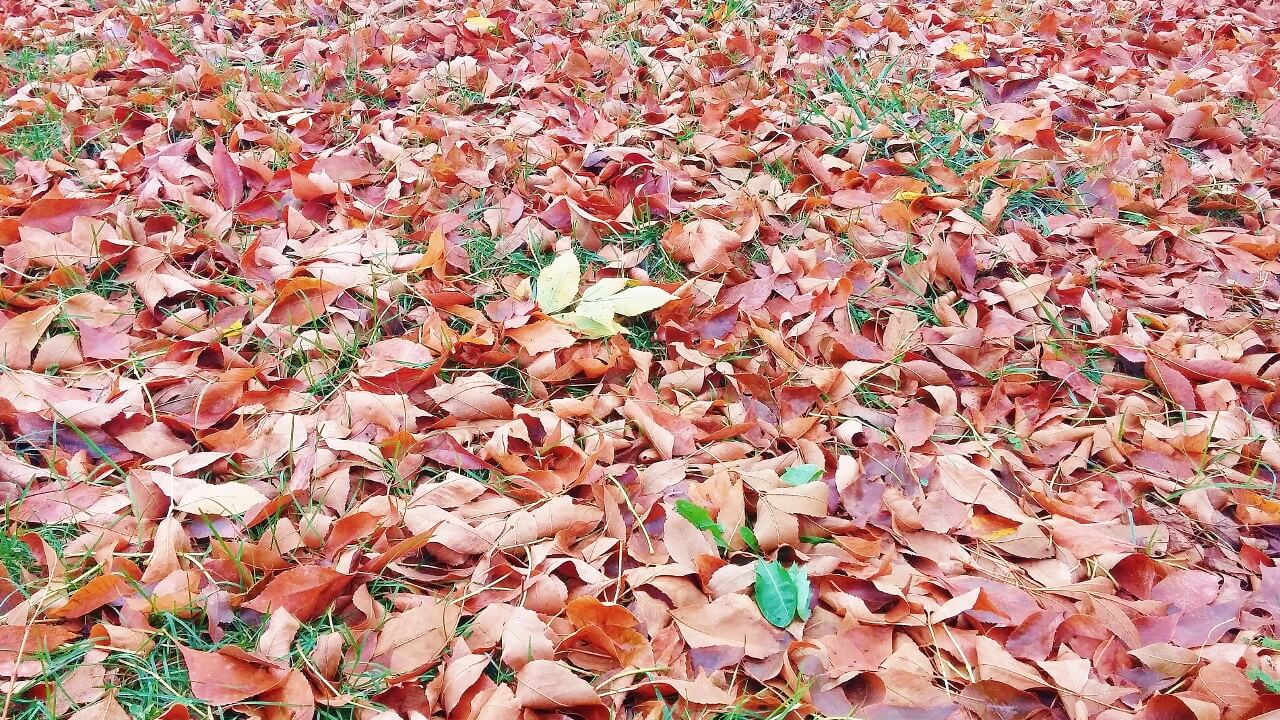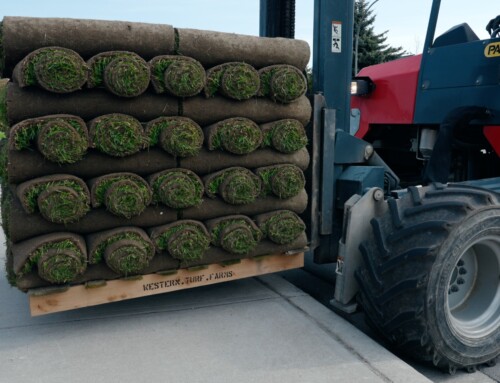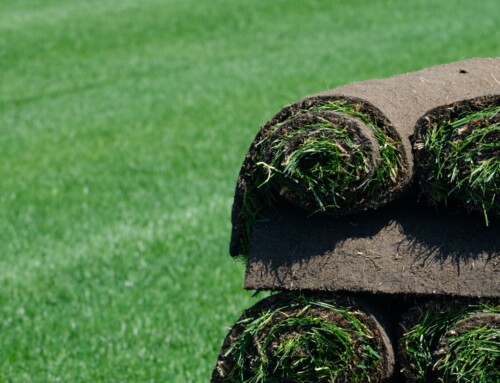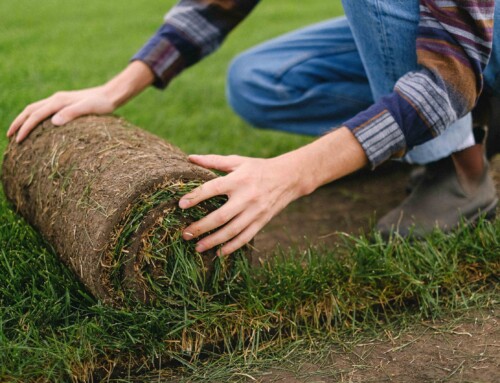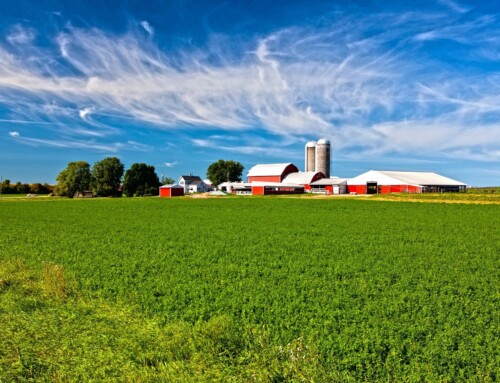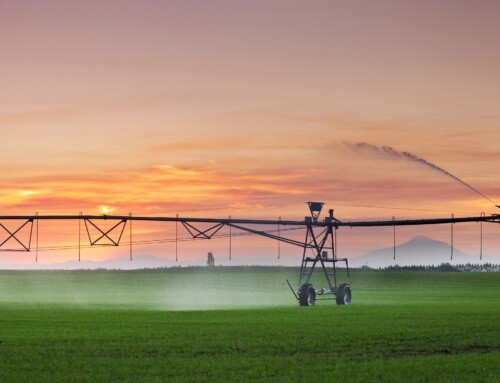Fall Lawn Care for New Homeowners
Do you know how to keep your lawn healthy & thriving this fall?
Fall lawn care can seem like an overwhelming task for new homeowners experiencing their first autumn – but it doesn’t have to be! Here’s a few tips, tricks, and to-dos for keeping up with fallen leaves and promoting a healthy lawn into 2017.
Mow Until the Lawn Stops Growing
Natural turfgrass lawns will continue to grow well into the fall, even as garden perennials are dying back. Although some homeowners will set an arbitrary ‘end-of-mowing’ date on the calendar, it’s actually better to continue to mow the lawn until the turfgrass finishes growing for the season. There are two main reasons for this.
Firstly, because even as temperatures cool and its growth rate slows, turf grass is still harvesting sunlight for photosynthesis. (As a general rule, if the grass is green, it’s photosynthesizing!) When turf grasses become too long they begin to flop over, preventing sunlight from reaching the lower blades of grass. This leads to die-off and decreased energy storage over winter, resulting in a thinner lawn the following spring.
Secondly, because during the winter months lawns that retain too much moisture are prone to developing a turf disease known as Snow Mold. By keeping lawns reasonably short, homeowners can promote air flow through the grass. This prevents moisture from building up and creating ideal conditions for diseases development.
Pro Tip: Skip the Buzz-cut! Ideally, homeowners should aim for about a 3-inch height on their lawns during the fall and winter months to promote airflow while still insulating and protecting the root zone from winter damage!
Fallen Leaves: Rake, Mulch, or Call for Help?
For many homeowners, the most challenging question of fall lawn care is “what do I do with all of these leaves?” It’s a good question, and there are several ways to answer it. Here we’ll make an effort to look at the issue from several angles so that homeowners can make an informed decision about which fall lawn care solution is best for them.
Why Should I Remove the Leaves?
It’s no secret that dead tree leaves are nature’s way of recycling nutrients back into the soil. But for homeowners desiring a healthy lawn that a dense layer of leaves is a one-way ticket to decreased photosynthesis, increased risk of disease, and a thinner lawn next year. So at what point do a few fallen leaves turn into a lawn problem?
As a guideline, we recommend that homeowners rake or mulch fallen leaves anytime they cover more than 10% of the lawn. Some homeowners may be able to get away with spot raking around a few trees, while others may need to clear the entire lawn to avoid build up, depending on the trees surrounding the property.
Should I Rake or Mulch?
When it comes to fall lawn care raking is a cost-effective way to remove fallen leaves from the residential lawn, but it has a few drawbacks. It can take quite a bit of time to rake all of the leaves from a property, and typically this will need to be done several times during the fall season. Beyond the time factor, raking can be a labor intensive job for anyone who isn’t accustomed to prolonged periods of physical activity, especially if fallen leaves have been allowed to pile up. On a more positive note, there’s nothing like a large pile of leaves to play in for families with small kids!
Another method for dealing with fallen tree leaves is to mulch them into the lawn using a lawn mower. Although it means mowing regularly well into the fall season, this is an effective way to deal with leaves, with the added benefit of creating an all-natural, organic mulch for the lawn that will enrich the soil over the coming months. Many newer models of lawn mowers already have a “mulch” setting, making this method especially easy for homeowners. For mowers that don’t come with a standard mulch option, mulching blades can often be purchased at local home improvement stores like RONA and Home Depot for a reasonable price.
Pro Tip: Some homeowners may live in cities or neighborhoods that offer leaf clean-up service dates. Check with your local municipality to find out if this is an option where you live.
No Time for Leaf Removal?
Fall is an incredibly busy season, and sometimes we just plain run out of time. For homeowners who need to remove leaves but are in a time crunch, we recommend hiring a professional crew to do the work. Often times, landscape and lawn care professionals will offer a leaf removal services to homeowners in their area during the fall season. It can seem like an expensive investment, but many homeowners discover it’s well worth the price once they factor in the amount of time they save.
Pro Tip: leaf removal services are popular. Call early in the season to secure a service!
Winterizing the Residential Lawn
Even as plants show signs of dying back above ground, their root systems often remain active well into the fall and winter months so long as the ground isn’t frozen. During this time, turfgrass root systems continue to gather and store up nutrients. These reserves will be used to break dormancy in spring, providing all of the energy the lawn needs to come back with vigor and vibrancy at the first sign of warmer weather.
We recommend that homeowners apply a late fall application of winterizer (fertilizer) to support continued root production and promote further energy storage for a spectacularly beautiful and healthy lawn next spring. Check out our blog: Preparing Residential Lawns for Fall and Winter to learn more!
The Takeaway
Fall lawn care can seem like an overwhelming task for new homeowners experiencing their first fall – but it doesn’t have to be! Just remember to mow until the lawn stops growing, clear away excess leaf fall once it covers more than 10% of the lawn, and remember to lay down a late season application of winterizer to promote a healthy lawn into 2017!

